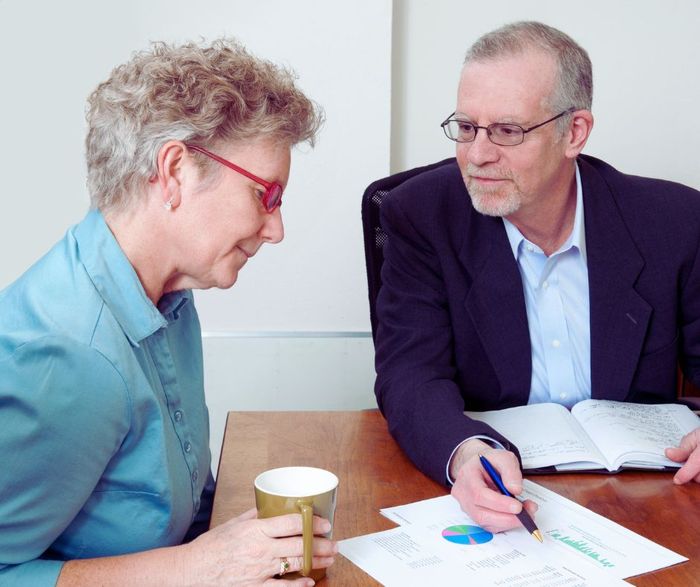Retirement Matters: Why It's Time to Reimagine Life After Full-Time Work

This article draws from "Retirement Matters," a dialogue paper I co-authored for the Australian Actuaries Institute. The paper explores the changing nature of retirement and how we can better prepare for this demographic shift. Read the full paper at https://www.actuaries.asn.au/retirement-matters
The concept of retirement as we know it today is fundamentally outdated, built on assumptions that no longer hold true in our modern world.
When German Chancellor Otto von Bismarck introduced the world's first state pension system in 1881, life expectancy was around 40 years. Today, people reaching age 65 can expect to live another 20-25 years, with much of that time spent in good health. Yet we continue to operate with a retirement framework designed for a bygone era. The time has come to fundamentally rethink our approach to life after full-time work.
From Point in Time to Life Phase
Traditional retirement was conceived as a single moment—a point when you stopped working and withdrew from productive life. The etymology reflects this: "retirement" comes from the French "retirer," meaning to leave or withdraw. For much of the twentieth century, this binary approach made sense when retirement lasted only a few years.
However, as life expectancy at age 65 has increased significantly, retirement has evolved from a point in time to what is effectively a new phase of life. This extended period encompasses three distinct stages: active years, more limited years, and dependent years. Each phase presents different opportunities, challenges, and needs. This reality demands a more sophisticated approach to retirement planning than the traditional model allows.
The Planning Paradox
One of the most significant paradoxes in retirement planning is the mismatch between what dominates pre-retirement planning and what actually determines retirement satisfaction. When planning for retirement, financial considerations typically take centre stage. People focus intensely on accumulation targets, withdrawal rates, and investment strategies.
Yet research consistently demonstrates that non-financial factors are often more important in determining whether someone has a good retirement. Studies show that 81% of retirees cite health as the most important ingredient for happiness in retirement, while financial security ranks second at 58%. Physical and mental health, relationships, and a sense of purpose and identity prove to be fundamental to retirement wellbeing.
This disconnect suggests we may be optimising for the wrong variables in our retirement planning process.
Beyond the Traditional Framework
We often describe the retirement income system as resting on three pillars: the social security, mandatory retirement savings, and voluntary savings. While this framework served its purpose, it assumes a clean break from work and fails to account for the diverse ways people actually experience the transition from full-time employment.
The reality is more complex and varied. Many people don't want to stop working entirely but seek greater flexibility. Phased retirement, bridge jobs, and encore careers are becoming increasingly common. Many retirees are re-joining the workforce—a phenomenon known as "unretirement."
Similarly, the traditional three-pillar model often treats the family home as an untouchable asset, despite it being the largest asset for most retirees. For many, accessing home equity could substantially improve retirement incomes while allowing them to remain in familiar surroundings.
We should expand our framework to include these additional sources of retirement support: flexible work arrangements and home equity access deserve recognition as legitimate pillars in the retirement income system.
The Support Gap
Perhaps the most significant failing of our current system is the lack of accessible, affordable guidance for people navigating the transition to retirement. The complexity of the retirement income system, combined with low levels of financial literacy, creates substantial barriers for individuals trying to make informed decisions.
People need comprehensive support that goes beyond product sales to include genuine assistance in understanding options, thinking through choices, and receiving advice tailored to their specific circumstances. However, such support is difficult to access and often expensive when available.
The current regulatory framework compounds these challenges. Many potential providers of guidance are constrained by uncertainty about what constitutes financial advice, creating a reluctance to offer the kind of support people actually need.
What Actually Matters in Retirement
When we examine what contributes to a successful retirement, the evidence points to four key elements: financial security, physical health, mental health, and a sense of purpose and identity. Financial security provides the foundation, but it's the combination of all four elements that determines retirement wellbeing.
The importance of meaning and purpose cannot be overstated. The Harvard Study of Adult Development, one of the longest-running studies of human happiness, concluded that positive relationships keep people happier, healthier, and help them live longer. Similarly, research shows that having a purpose in life consistently serves as an indicator of healthy aging and can reduce mortality risk.
Yet traditional retirement planning rarely addresses these non-financial dimensions systematically. This represents a significant gap in how we prepare people for this major life transition.
Reimagining Retirement
Reimagined retirement recognises that we're not planning for withdrawal from life, but for a potentially transformative phase of renewal, reinvention, and discovery. This requires a holistic approach that considers health, relationships, purpose, and financial security as interconnected elements.
It means acknowledging that there is no single retirement model that works for everyone. Your retirement may look entirely different from previous generations, and that's not only acceptable—it's necessary given the changed circumstances of longer, healthier lives.
Reimagined retirement also requires better support systems. We need frameworks that enable people to access help, guidance, and advice when they need it, in formats that make sense to them.
The Path Forward
As President John F. Kennedy observed sixty years ago,
"It is not enough for a great nation merely to have added new years to life—our objective must also be to add new life to those years."
This challenge is even more pressing today.
The question facing each of us is: what does retirement reimagined look like? This requires thinking beyond traditional financial calculations to consider what gives life meaning, which relationships matter most, and how to spend what could be 20-30 years after full-time work in ways that are both financially secure and personally fulfilling.
The answers to these questions should inform retirement planning, not be relegated to afterthoughts. Because ultimately, retirement isn't simply about accumulating enough money to stop working—it's about creating the foundation for what could be among the most rewarding years of your life.
The demographic and social trends reshaping retirement are not slowing down. The time to begin this reimagining is now, both for individuals planning their own futures and for the institutions and systems that must adapt to serve them effectively.
Related content









